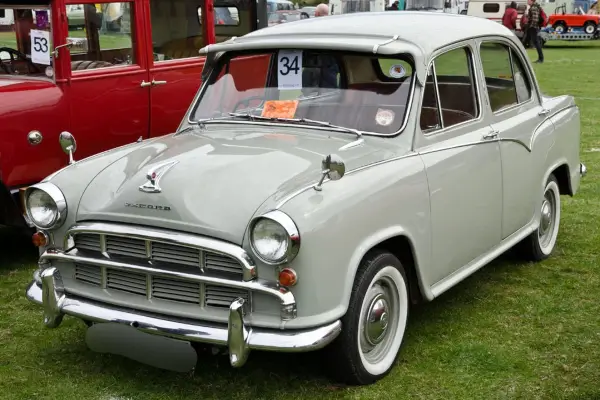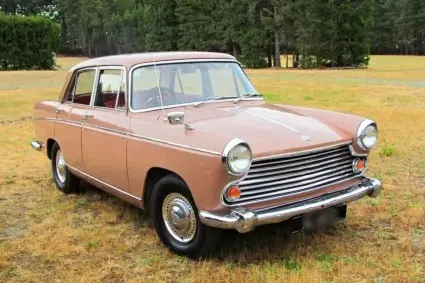Morris Tyres
Classic Morris Tyres
On the following pages, Longstone Classic Tyres give classic tyre fitment recommendations for Morris cars.
If your car is not listed, don't panic! Please give us a call on:
01302 711 123
or
Email: sales@longstonetyres.co.uk
Vintage Morris Tyres
From the iconic "Woody" Oxford Travellers to the Bull-Nosed early Morris, we have all your classic tyre needs covered at Longstone Tyres.
Morris History
WRM Motors Ltd was founded in 1912 by bicycle maker William Morris, who transitioned from the sale, leasing, and maintenance of automobiles to vehicle production. He intended to build a new light automobile using imported components. He was able to preserve control in this manner by remaining within the confines of his own capital resources. Morris's first automobile, the Morris Oxford "Bullnose" was constructed in 1913 at the old Oxford Military College in Cowley, Oxford, United Kingdom. Almost all of the key components were purchased. A coupé and a van were introduced to the lineup in 1914.

Because the American engine was no longer available after the war, Morris arranged for Hotchkiss of France to produce a near-identical duplicate in their Coventry facility. This was used to power updated variants of the basic Cowley and the more upscale Morris Oxford vehicles. With a reputation for producing high-quality cars and a price-cutting policy, Morris' business continued to grow and increase its share of the British market, eventually eclipsing Ford to become the UK's largest car manufacturer in 1924, with a 51 per cent share of the domestic market and remaining enormously profitable.
In 1924, Cecil Kimber, the head of Morris's original 1909-founded Morris Garage sales, hiring, and repair company in Oxford, began constructing sports versions of Morris automobiles under the MG brand. They were so successful that a separate MG plant was shortly constructed in Abingdon, Oxfordshire, south of Oxford.
The Leonard Lord-designed Morris Minor, powered by an 847 cc engine from Morris' newly purchased Wolseley Motors, hit the small vehicle market in 1928. Lord was dispatched to modernise the factory and Wolseley's goods. The Minor would serve as the foundation for the MG Midgets. This opportune expansion into the compact vehicle market aided Morris throughout the 1930s economic downturn. The Morris Eight, a direct answer to the Ford Model Y and, despite Leonard Lord's creation, partly based on it, replaced the Minor at the 1934 London Motor Show.
Morris hired Lord as Managing Director of Morris Motors Limited in 1932, and Lord overhauled the Morris works, modernising manufacturing processes, introducing a proper moving assembly line, and establishing Europe's biggest integrated vehicle facility. But Morris and Lord had a falling out, and Lord resigned after 15 years in 1936. Lord went to Austin, and they were to re-meet in BMC—Morris as Lord Nuffield, the organization's inaugural chairman. Lord took his place.

During a visit to London during a polio outbreak in 1938, Lord Nuffield witnessed the usage of an Iron Lung. He commissioned an updated design that could be built using automobile assembly processes and arranged for the manufacturing of roughly 1700 machines at the Cowley factory, which he gave to hospitals throughout the United Kingdom and the British Empire. Both-Nuffield respirators could be mass-produced in thousands at a fraction of the cost of the American design.
Morris agreed in the summer of 1938 to build, equip, and operate a massive new factory at Castle Bromwich solely to produce Supermarine Spitfires, with the goal of eventually building bombers. Nuffield's administration failed, and no Spitfires were delivered by May 1940, despite a daily delivery rate of 60. The Ministry of Aircraft Production took over the facility, bringing in management from Supermarine and placing it under the control of Vickers-Armstrongs. After a significant air attack devastated the Morris Bodies plant, the facility turned to the manufacturing of jerry cans, creating millions of adaptable containers for use during the duration of the war and after the conflict ended.
Following the Second World War, production resumed using the pre-war 8 and 10 designs. The Morris Eight was replaced in 1948 by the Morris Minor, which was designed by Alec Issigonis who subsequently went on to develop the Mini. The Ten was replaced in 1948 by a new Morris Oxford MO, which was designed to seem like a bigger version of the Minor. A later Morris Oxford (the 1956 Morris Oxford III) served as the inspiration for the Indian Hindustan Ambassador, which was produced until 2014!
The Nuffield Organization united with its old foe, the Austin Motor Company, to establish the BMC in 1952. Nuffield included the marques Morris, MG, Riley, and Wolseley in the merger. BMC purchased Jaguar in 1966 to become British Motor Holdings (BMH), which combined in 1968 with Leyland Motors to form the British Leyland Motor Corporation, and then, in 1975, the nationalised British Leyland Limited (BL). The Cowley complex remained the second-largest single plant in the BL empire (behind Longbridge), but BL's history was volatile, BMC was on the verge of bankruptcy, and the new Leyland leadership failed to turn the company's fortunes around. Because the successor for the Morris Marina and Leyland Princess was delayed until the 1980s, the Marina was reworked in 1980 to become the Morris Ital, while the Princess was reworked in 1982 to become the Austin Ambassador. The Morris Ital was the company's final passenger car, with manufacturing ceasing in the summer of 1984. The penultimate Morris was a van variation of the Austin Metro before the Morris marque was officially discontinued in 1987.
After extensive restructuring at BL in the late 1970s and early 1980s, the old Morris factory at Cowley and its sister site, the former Pressed Steel facility, were converted to Austin and Rover-badged vehicle manufacture. They were used by BL's Austin Rover Group and its successor, the Rover Group, which was subsequently purchased by BMW and then by a management consortium, resulting in the formation of MG Rover. None of the previous Morris structures remains. In 1992, British Aerospace sold the facility, which was eventually dismantled and replaced with the Oxford Business Park. BMW owns and operates the neighbouring old Pressed Steel plant (now known as Plant Oxford), which is used to construct the new MINI. Nanjing Automobile Corporation now owns the rights to the Morris brand.



